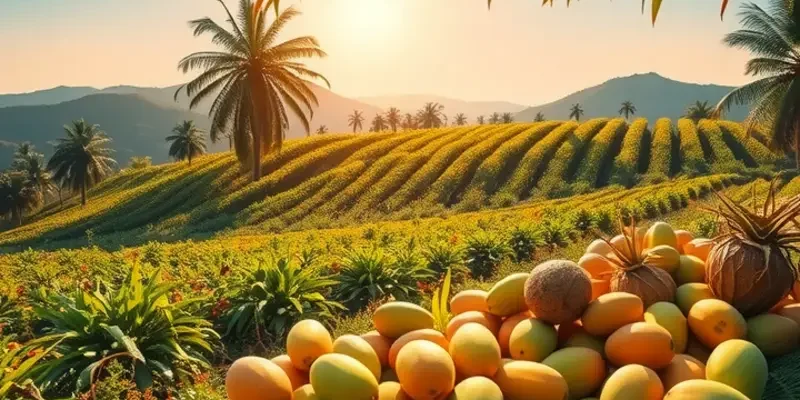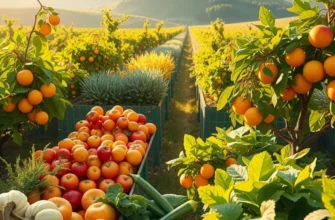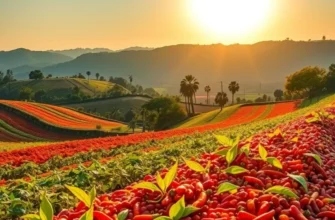Nestled amidst lush landscapes and vibrant ecosystems, tropical regions are a cornucopia of culinary delights. Each dish tells a story steeped in tradition, reflecting the rich heritage of the many cultures that thrive in these sun-soaked lands. From the sweet, aromatic fragrances of ripe mangoes to the spicy warmth of fresh peppers, the foods of tropical regions beckon adventurous eaters and curious palates to indulge in their exquisite and diverse offerings. Journey onward into a world where taste knows no boundaries.
Tropical Fruits: Nature’s Sweet Treats
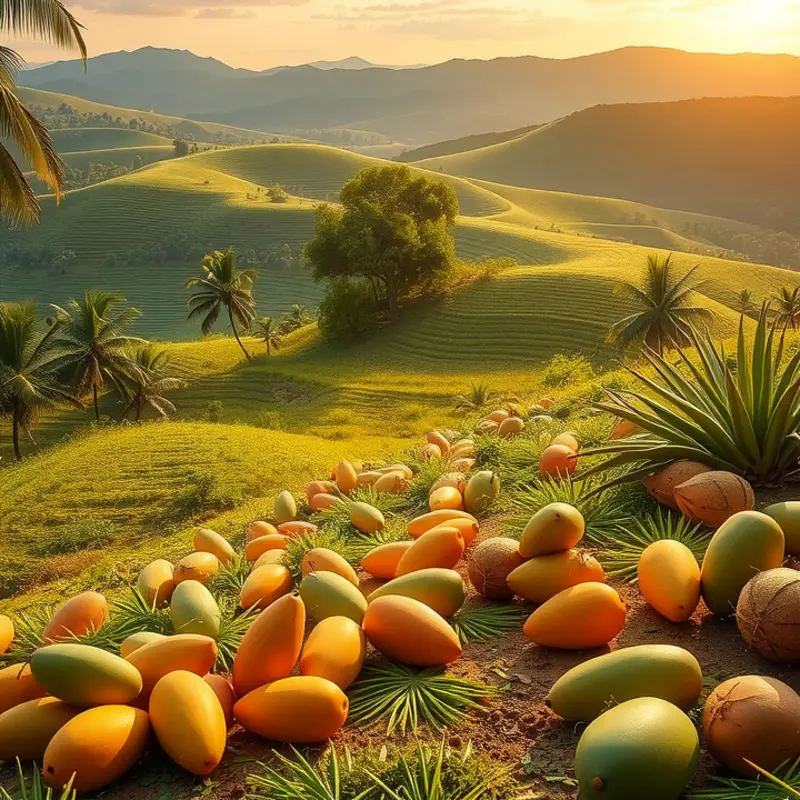
In the heart of tropical regions, nature offers a dazzling array of fruits that capture the very essence of these vibrant climates. Among these treasures, the papaya stands out with its luscious and buttery texture. Enriched with a unique flavor profile, it serves as a versatile ingredient in both sweet and savory dishes. In several cultures, it is common to see papayas used in refreshing smoothies, vibrant fruit salads, or even grilled to enhance their subtle sweetness.
Not far behind in popularity is the tart and tangy tamarind. Known for its complex flavor, tamarind paste is a cherished component in many traditional cuisines, from Central America to Southeast Asia. Its rich savoriness is often utilized in sauces and drinks, making it an indispensable part of daily diets.
Traveling through bustling tropical markets, one cannot miss the heady aroma of ripe mangos. Revered not just for their sweetness but also for their cultural significance, mangos are often presented as offerings in religious ceremonies in South Asia, symbolizing prosperity and abundance. Perfect on their own, mangos also star in creamy desserts, spicy salsas, and are even pickled to enjoy their flavor throughout the year.
Guavas, another tropical delight, present a harmonious blend of sweetness and slight tartness. Rich in vitamin C, they are a nutritional powerhouse, often enjoyed fresh with a sprinkle of chili salt for that perfect balance of flavors.
The ritual of consuming these fruits varies widely across cultures. In some regions, fruits like papaya and mango are consumed as part of breakfast to kickstart the day. In others, they may be offered in celebratory feasts, embodying luxury and opulence. The diversity of consumption methods not only highlights the versatility of these fruits but also underscores their integral role in culinary traditions.
Markets are the beating heart of many tropical communities, brimming with vibrant displays of fruits – a sensory feast for both locals and travelers. These gatherings are more than mere places for shopping; they are spaces where cultural exchanges occur, stories are shared, and the rich tapestry of tropical life unfolds.
Incorporating these fruits into daily meals offers a direct connection to the regions they originate from. For those looking to embark on a culinary journey of their own, understanding these tropical treasures’ cultural significance and taste can transform ordinary meals into exotic experiences infused with history and tradition.
To further explore the intricate relationship between local ingredients and traditional cuisines, you might find this insight into culinary influences and trade enriching, revealing how these vibrant flavors travel and transform around the globe.
Aromatic Spices and Savory Dishes
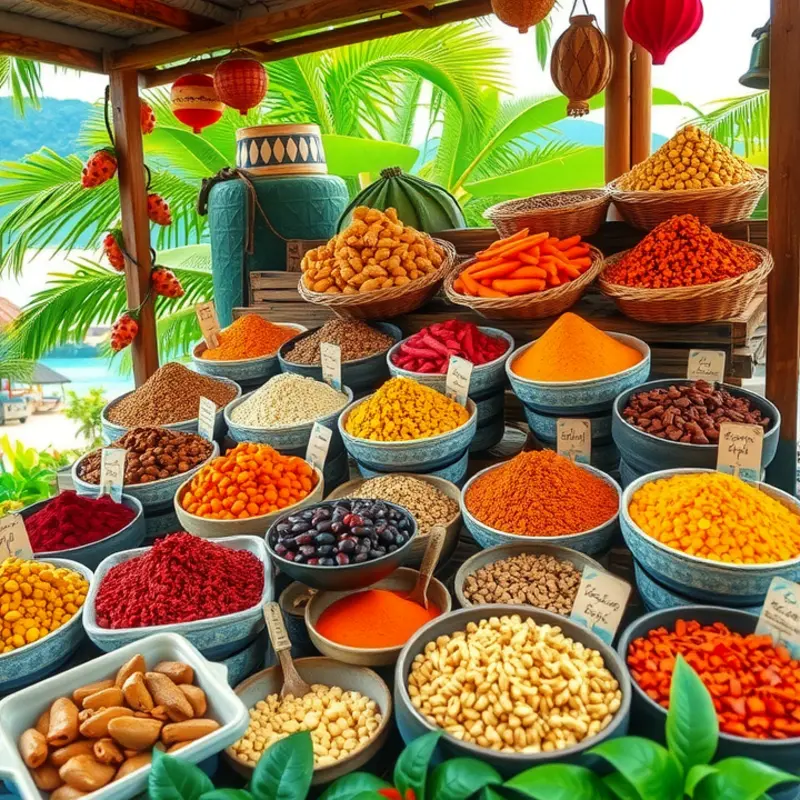
The tropical regions of the world offer an abundant variety of spices that transform ordinary dishes into culinary masterpieces. Each spice contributes unique flavors and aromas, intertwining with cultural traditions that span generations. Fiery chili peppers, for example, bring heat to many tropical dishes. These peppers not only spice up meals but symbolize vitality and celebration in many societies.
Lemongrass, with its citrusy fragrance, is a staple in numerous tropical cuisines, known for its ability to blend seamlessly with both savory and sweet dishes. It is particularly prominent in Thai cooking, where it enlivens soups, teas, and the renowned Thai green curry. The pungent aroma of lemongrass, combined with the richness of coconut milk, creates a harmonious balance that defines this dish. Each spoonful is a burst of flavor, courtesy of the spices that weave together a tapestry of taste.
In Indian cuisine, biryani is a perfect example of how spices can elevate a dish to new heights. This aromatic rice dish, layered with succulent meats and a variety of spices such as saffron, cardamom, and cloves, is more than just food—it’s an experience. The spices utilized in biryani are a testament to India’s rich culinary heritage, each contributing its distinct character, from the heady warmth of cinnamon to the subtle sweetness of nutmeg.
Spices are not merely ingredients but play an integral role in traditional practices and festivals. In many cultures, spices are seen as gifts from the earth, and their harvest is celebrated with rituals. These practices underscore the cultural identity embedded in tropical cuisines. Cooking with spices is a ritualistic act, connecting people to their heritage and ancestors each time a dish is prepared.
Everyday cooking in tropical countries is heavily reliant on these aromatic spices. They serve as the backbone of numerous dishes, providing a depth of flavor that is both comforting and exotic. Whether woven into a spicy Caribbean jerk marinade or a fragrant Brazilian Feijoada, spices influence not only the taste palette but also the cultural cadence of meals.
Understanding the importance of these spices can greatly enhance one’s culinary repertoire. As explored in this guide, there are numerous ways to incorporate the complexity of tropical spices into cooking, allowing flavors to shine without an overload of salt. This knowledge enriches one’s appreciation for the tropical world and its diverse spice offerings, encouraging a deeper exploration of foods that celebrate both tradition and flavor.
Final words
Tropical foods are much more than mere ingredients; they are the embodiment of culture, community, and history. Each bite offers a glimpse into the vibrant practices and traditions passed down through generations. Whether savoring the juicy sweetness of fresh fruits or encountering the nuanced spicy profiles of regional cuisines, the culinary landscape of tropical regions invites food lovers to experience and connect with the cultures that create these remarkable dishes. Embracing these flavors is not just a culinary adventure; it’s a celebration of diversity and shared humanity that transcends borders.

